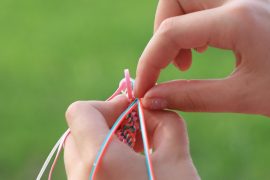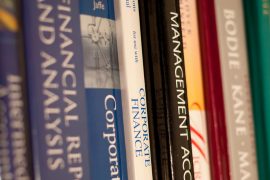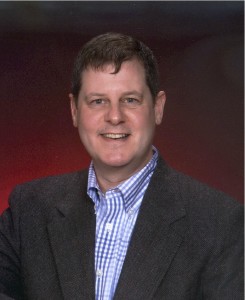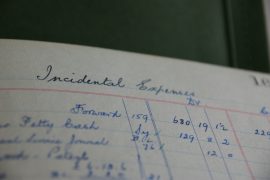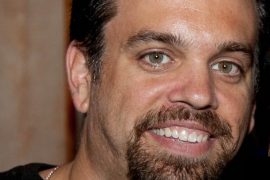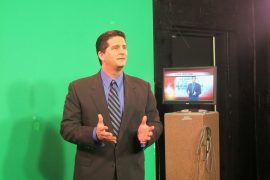Anyone who knows anything about baseball knows that math plays a pretty big role. From how the pitcher releases the ball to the many stats that help rank the best players, the game depends on numbers. No one knows this better than Charlie Vascellaro. He’s been a freelance baseball (and travel) writer for 20 years. Here’s how he uses math in his work.
Can you explain what you do for a living?
I write baseball and travel feature stories for magazines, newspapers and web sites. A lot of my baseball writings are historical retrospective pieces that include statistical analysis and comparisons. In a recent story on this year’s National Baseball Hall of Fame inductee, Barry Larkin, I compared his batting statistics to those of other shortstops enshrined in the Hall of Fame. I also write spring training preview stories on major league baseball teams that rely heavily on statistical information used to explain each teams relative strengths and weaknesses and how they compare to other teams. I use this information to measure each teams’ relative prospects for the upcoming seasons. Last spring I wrote a feature story on current players chances of being elected to the Hall of Fame based on statistics produced so far and projections for the future (see excerpts below).
Jered Weaver, 29, had what could be described as a breakout season in 2011, reaching a career best with 18 victories and a 2.41 ERA. In six seasons, Weaver has compiled an 82-47 record, for a very Hall-of-Fame-like .632 winning percentage with a 3.31 ERA. The 300-victory-pitcher is fast becoming an endangered species, and consequently, not a necessary prerequisite for the Hall, but Weaver would still have to maintain his current pace, and actually improve upon it a bit, to merit consideration for Cooperstown; a 20-win season or two would certainly improve his chances.
Of the current White Sox players, slugging first baseman/DH Paul Konerko compares favorably with Hall of Famer Orlando Cepeda in similarity of scores posted on Baseball-Reference.com, and although he has not quite reached 400 home runs, (he’s currently at 396) he probably will this year. Konerko’s numbers are also similar to what Reggie Jackson’s were at the same age, and his .282 batting average is 20 points higher than Jackson’s .262 career mark. Jackson hit 39 home runs at age 36 and 99 home runs in his last 5 years on the field. Konerko hit 31 last year at age 35, and will probably end up pretty close to Jackson’s 563. In today’s age of inflated offense, Konerko’s eventual career statistics might be on the cusp of Hall-of-Fame-worthiness, but I like his chances.
When do you use basic math in your job?
Oftentimes while I am writing a baseball story I will consult the www.baseballreference.com website to research statistical material. Sometimes I might have to tally up home-run and runs-batted-in totals and divide them by the number of years to decipher the average numbers per year. I do a lot of multiplication and division to figure percentages. For example, a player’s batting average can be figured by dividing the number of hits by the number of at bats. Three hits out of 10 at-bats is 3 ÷ 10 or .300.
Earned run average (ERA) is a measure of a pitcher’s relative effectiveness and is often referenced when writing about pitchers. Earned run average is the number of earned runs scored against a pitcher, divided by the number of innings pitched multiplied by nine (the number of innings in a regulation game). Earned runs are scored without the assistance of a fielding errors. ERA is represented with a number followed by a decimal and two percentage points explaining how many runs a pitcher gives up in an average nine-inning game. Here’s an example: In 1985, Dwight Gooden of the New York Mets gave up 47 earned runs in 276 and 2/3 innings pitched for a National League leading ERA of 1.53, a number which has not been reached by any starting pitcher since Gooden accomplished the feat. Prior to Gooden’s stellar season, no pitcher had recorded an ERA as low as Gooden’s 1985 figure since Bob Gibson of the St. Louis Cardinals in 1968. (His ERA was 1.12.)
Do you use any technology (like calculators or computers) to help with this math?
I use the calculator on my computer, which I can move around on top of the statistical information, so that both are visible to me at the same time.
How do you think math helps you do your job better?
Math and baseball are inseparable. Mathematical measurements are employed to explain batters’ and pitchers’ relative success and failure. Individual and team statistics are used by writers to explain what has transpired during the course of a baseball game, a baseball season and a baseball career.
How comfortable with math do you feel?
I was not very proficient at math in high school or college. In fact I struggled with high school algebra which is as far as I have advanced in mathematical skills and could probably not solve an algebraic equation today. I would like to strengthen my math skills.
Did you have to learn new skills in order to do the math you use in your job?
Thankfully, I have been figuring batting averages and earned run averages since I first became a baseball fan. Fortunately I can still get by in my baseball writing with the rudimentary math skills that I have. However, statistical analysis in baseball has become much more complicated and there are certain statistical formulas that I do not understand.
Read a few of Charlie’s stories:
The Living Spirits of Sports Legends
The King and I: Remembering and Writing about Dave Kingman
Do you have questions for Charlie? Ask them in the comments section, and I’ll let him know they’re here. Do you remember learning math through baseball when you were a kid? Share your stories below.




